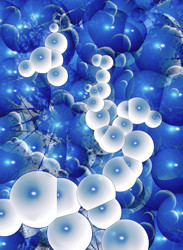Individual atoms in a continuum
Nanoscale materials in transistors, memories, fuel cells and more have very large surface areas compared to their volumes making interfaces even more important. Groups working on the continuum (thermodynamic or macroscopic) level and the atomistic (microscopic) level bridged the current knowledge gap by sharing expertise and opinions. The EU-funded project MACAN(opens in new window) integrated EU core partners with experts in Japan, the US, India and Brazil creating an environment conducive to communication and collaboration. In uniting both descriptions, the project has provided the basis for knowledge-based design criteria of advanced materials systems. In its brief two-year duration, the project received high-profile coverage in 'The Journal of Materials Science' several times. It hosted six conferences, two of which resulted in special issues of the journal specifically to present papers from the symposia following full peer review. The final partner meeting included invited talks by outside experts as well as industrial presentations and presentations by MACAN students. A review paper merging continuum and atomistic approaches at interfaces was also published in 'The Journal of Materials Science'. MACAN organised an eight-day summer school consisting of morning lectures and afternoon hands-on exercises and conducted exchanges among partners to broaden student training. MACAN’s fruitful scientific exchange has helped identify and fill gaps in current research and methodology on the behaviour of nanoscale materials at their interfaces. It has merged the continuum and atomistic research fields, helped establish an international partnership that spans multiple continents and brought industry on board as well. Project activities have improved our understanding of materials interfaces. This should facilitate future design of exciting new devices and products in fields ranging from electronics to biomedicine to energy.







